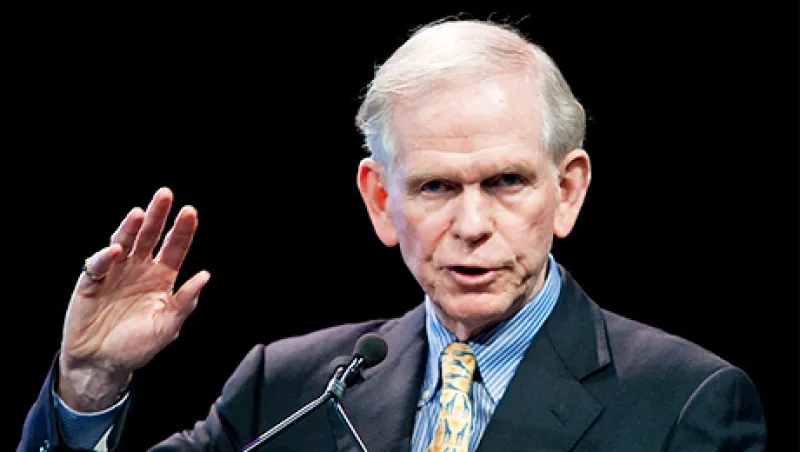In the 1930s and ‘40s, “Father of Value Investing” Benjamin Graham famously popularized the idea that stock prices may change, but all things eventually revert to the mean — a philosophy that later would be adopted by investors including Warren Buffett and Seth Klarman. But what happens when the mean itself changes?
In his latest client letter, Jeremy Grantham, famed value investor and co-founder of $77 billion asset manager Grantham Mayo Van Otterloo & Co., makes the case that the average has shifted upward for important metrics including price-to-earnings ratios and profit margins, throwing off the historical balance used to determine market value.
“For value managers the world was, for the most part, convenient, and even easy, for decades,” he wrote. “And then it changed.”
According to Grantham, 1996 was a tipping point for investing. Since that year, price-to-earnings ratios “still oscillated the same as before,” but around a “much higher mean — 65 percent to 75 percent higher.” Profit margins have also gotten higher, with the mean over the last two decades up 30 percent compared with pre-1997 averages.
“We value investors have bored momentum investors for decades by trotting out the axiom that the four most dangerous words are, ‘This time is different,’” Grantham wrote. “For 2017 I would like, however, to add to this warning: Conversely, it can be very dangerous indeed to assume that things are never different.”
Although Grantham lists many ways the economy has changed since the turn of the century — among them aging populations, a higher degree of income inequality, and a more hands-on Federal Reserve — he says the factor most influencing higher prices is improved corporate profitability.
“Stock prices are held up by abnormal profit margins, which are in turn produced mainly by lower real rates, the benefits of which are not competed away because of increased monopoly power,” Grantham argued.
This chain would be broken if interest rates rose materially, but Grantham doesn’t see that happening very quickly, given the Fed’s recent history.
“Investors — value managers included — should brace themselves for continued higher multiples than those of the old days,” he wrote.
Although Grantham makes it clear he does not believe current higher levels of profitability are here to stay, he concludes that a return to pre-1997 trends of profitability, interest rates, and pricing is a long way off.
“It seems likely that we will have a longer wait than any value manager would like,” he wrote. “Including me.”







